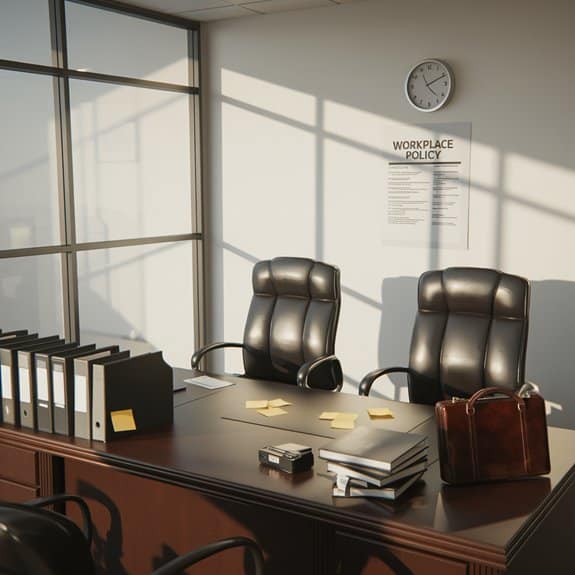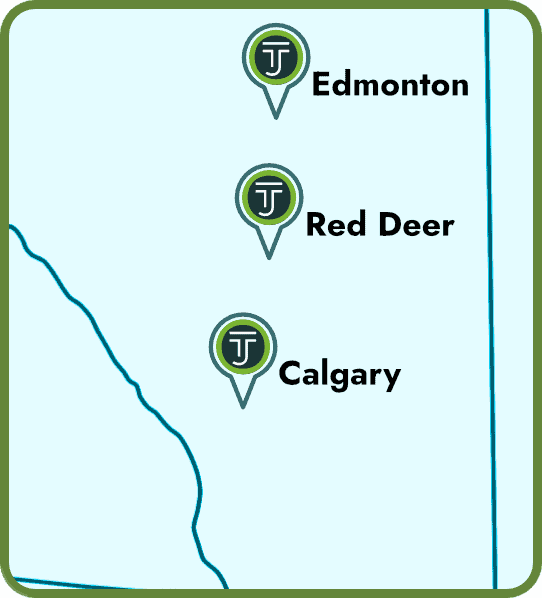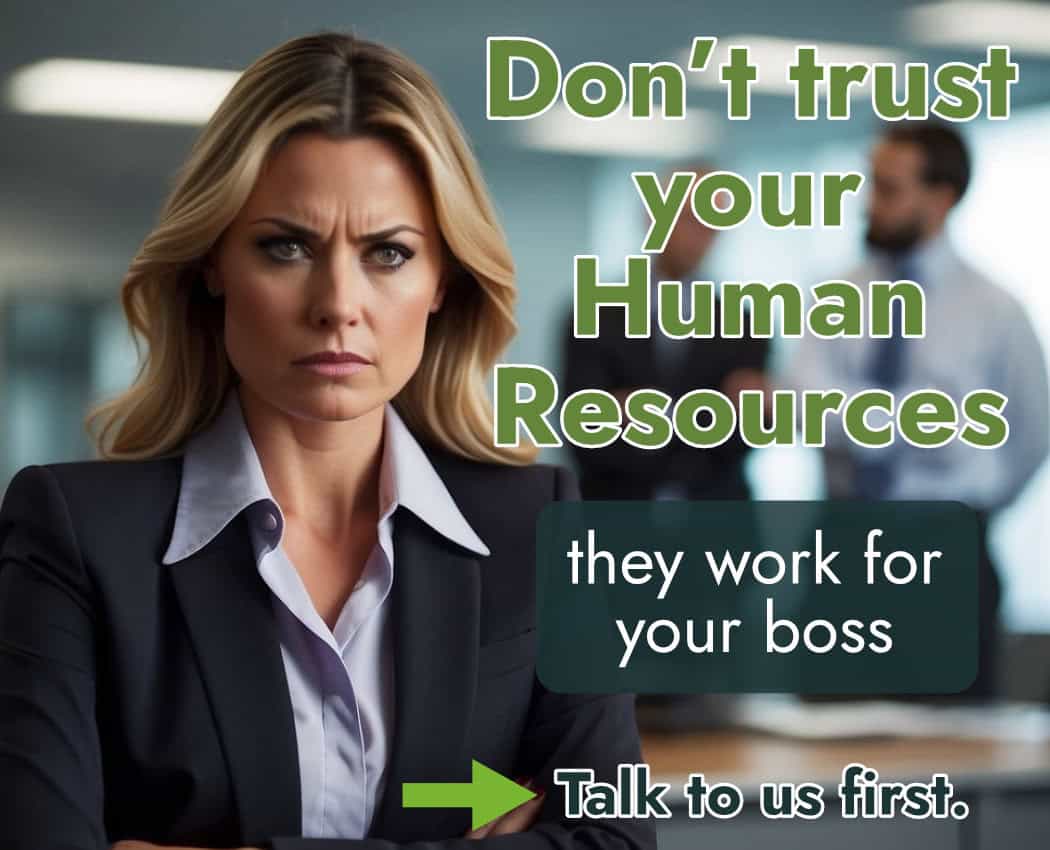
If you are an Employer in Alberta, dealing with issues of employee misconduct, such as harassment, safety violations, or performance issues, you will need to conduct thorough workplace investigations before terminating employees in order to protect your organization legally. Document all evidence (good and bad) of the issue you are facing, conduct thorough interviews with relevant parties, maintain detailed records throughout the process, guarantee confidentiality, and give accused employees a chance to respond. Make sure the accused employee(s) are aware of their rights, and the potential outcomes, including termination.
A well-executed investigation process helps build a solid foundation for termination decisions and minimizes potential legal challenges. Failing to conduct fair, objective, and comprehensive investigations into employee misconduct can result in significant awards in wrongful dismissal and damages.
The Legal Landscape of Employee Termination in Alberta
Alberta’s employment laws provide significant protections for workers, so employers must navigate a complex legal framework when terminating employees.
You’ll need to understand that Alberta courts set a high threshold for just cause termination, requiring clear evidence of serious misconduct, or well-established, documented performance issues which remain unresolved after previous warnings, coaching, and real opportunities to improve. Just cause termination is considered a serious penalty reserved for employee conduct that fundamentally breaches the employment relationship.
When you’re considering termination, you’ll find that the burden of proof rests heavily on you as the employer. Without proper documentation and a thorough investigation, you’re exposing yourself to significant legal risks, including wrongful dismissal claims, claims for damages, and legal costs.
In conducting terminations, you must also ensure that you’re meeting the requirements of the Employment Standards Code, which outlines minimum notice periods and severance obligations.
Key Triggers for Workplace Investigations
Although workplace investigations aren’t legally mandated in Alberta, several critical situations should trigger an immediate investigation to protect both employer and employee interests. You’ll need to act promptly when specific incidents occur, as proper documentation and investigation can greatly strengthen your position if legal challenges arise.
| Trigger Situation | Required Action |
|---|---|
| Harassment Claims | Interview parties, gather evidence, review policies |
| Safety Violations | Document incidents, inspect site, collect witness statements, contact relevant authorities if necessary (WCB, Alberta Occupational Health & Safety, Emergency Services if there are injuries) |
| Performance Issues | Track patterns, review metrics, consult supervisors, provide concrete metrics for improvement, and emphasize risk to ongoing employment if improvements are not achieved in a reasonable time. |
| Policy Breaches | Verify facts, assess severity, check previous incidents |
| Financial Misconduct | Audit records, secure documents, trace transactions, contact relevant authorities if necessary |
Remember that each investigation should be proportional to the severity of the allegations and conducted with fairness and objectivity, while maintaining confidentiality throughout the process.
Essential Steps in the Investigation Process
A successful workplace investigation follows a structured sequence of carefully planned steps to guarantee thoroughness and fairness.
When you’re conducting an investigation in Alberta, you’ll need to verify each phase is well-documented and follows proper protocols to protect both the employer and employees involved in the process.
- Gather initial information, including the specific allegations, relevant documentation, and identify potential witnesses who can provide firsthand accounts.
- Interview all parties involved, beginning with the complainant, then witnesses, and finally the respondent, verifying you document each conversation thoroughly.
- Collect and analyze all available evidence, including emails, security footage, personnel files, and any physical evidence related to the allegations.
- Draw conclusions based on the balance of probabilities standard, documenting your findings and recommended next steps in a detailed report.
Before starting an investigation, you must also consider who will be doing the investigation. Internal investigations can lead to allegations of bias, which undermines their credibility. If you are going to use an internal investigator, ensure they have sufficient training and experience to do the work well, and have not been involved in advising on this issue previously. External investigations can be costly, but may be valuable defenses to arguments of conflict of interest or perceptions of bias.
Building a Strong Foundation
Building a solid foundation of evidence forms the backbone of any workplace investigation in Alberta. You’ll need to gather concrete proof that supports your findings and potential disciplinary actions.
Start by collecting all relevant documentation, including emails, performance reviews, attendance records, and any written complaints or incident reports.
Don’t rely solely on written evidence. You should conduct thorough interviews with witnesses and document their statements carefully.
When possible, gather physical evidence like security footage, photographs, or digital records. Remember to maintain a clear chain of custody for all evidence you collect.
Make sure you’re preserving evidence properly and creating detailed notes about when and how you obtained each piece.
This careful documentation will strengthen your case if you face legal challenges later, especially in wrongful dismissal claims. Make sure you collect everything relevant, whether it supports the allegations or refutes them.
Best Practices for Employee Interviews
Conducting effective employee interviews requires careful preparation and a structured approach to gather reliable information during workplace investigations.
You’ll want to establish a clear methodology that guarantees consistency and fairness throughout the process.
- Set up a private, comfortable meeting space where you won’t be interrupted, and inform participants about confidentiality expectations and their right to have a representative present.
- Prepare your questions in advance, focusing on open-ended inquiries that encourage detailed responses rather than simple yes/no answers.
- Document the interview thoroughly, taking detailed notes or recording with consent, and have the interviewee review and sign their statement.
- Maintain neutrality throughout the conversation, avoiding leading questions or showing bias toward any particular outcome or version of events.
Documentation Requirements and Record Keeping
Proper documentation serves as the cornerstone of effective workplace investigations in Alberta, protecting both employers and employees while creating a clear record of the investigative process.
You’ll need to maintain detailed records of every step, including complaint forms, witness statements, and interview notes. It’s essential to date and sign all documents, and keep them in a secure, confidential location.
You should document your investigation timeline, including when you received complaints, conducted interviews, and made decisions. Don’t forget to record any physical evidence, such as emails, photos, or video footage. You’ll want to maintain copies of all correspondence related to the investigation and create a final report that summarizes your findings, analysis, and recommendations.
Common Pitfalls to Avoid During Investigations
Several critical mistakes can derail workplace investigations in Alberta, potentially exposing employers to legal liability and undermining the integrity of the process.
To guarantee your investigation remains defensible and effective, you’ll need to avoid these common pitfalls that often compromise results.
- Ensure that your interviewer is properly qualified, and can conduct the investigation in an unbiased and thorough manner. Give careful consideration to whether this can be done internally, or if you need specialized expertise from the outside.
- Don’t rush to conclusions before gathering all relevant evidence and interviewing key witnesses – hasty decisions often lead to incomplete or incorrect findings.
- Never fail to properly document each step of the investigation, including dates, times, and detailed accounts of all interviews and evidence collected.
- Don’t forget to maintain confidentiality throughout the process – sharing investigation details can damage reputations and create legal issues.
- Never deny the accused employee an opportunity to respond to allegations or present their side of the story before making final decisions.
Alternative Resolution Options Before Termination
Before moving forward with termination, employers in Alberta should explore several constructive alternatives that can help address workplace issues while preserving the employment relationship. Depending on the severity of the conduct, failing to take these steps may lead to a conclusion that an employer acted prematurely.
Unless conduct is so egregious and unequivocal that there is no way to safely keep an employee around, progressive discipline, realistic timelines, and clear warnings of potential consequences should be given.
You can start with a verbal warning to address minor infractions, followed by written warnings if the behaviour continues. Performance improvement plans offer structured guidance and measurable goals for employees struggling with their duties.
Consider temporary suspension or demotion as disciplinary measures for more serious infractions. You might also explore workplace mediation to resolve conflicts between employees or departments.
Job reassignment can help when an employee’s skills better match another role. Additional training and mentoring can address skill gaps, while coaching sessions can improve behavioural issues.
These options demonstrate your commitment to employee development and can strengthen your position if termination becomes necessary.
Conclusion
As you navigate workplace investigations in Alberta, you’ll find that proper documentation and thorough processes are your best defense against wrongful dismissal or other legal claims. Remember to follow a systematic approach, build in safeguards to maintain confidentiality and impartiality, gather concrete evidence, and give employees fair opportunities to respond. While investigations aren’t legally required, they’re essential for protecting your organization and ensuring your termination decisions hold up under legal scrutiny. When in doubt, consult employment law experts.

We currently have three offices across Alberta — Edmonton, Calgary, and Red Deer. We serve the entire province of Alberta (and BC). We also have the infrastructure to work with any of our clients virtually — even the furthest regions of Alberta.
Call 1 (844) 224-0222 (toll free) to get routed to the best office for you or contact us online for general inquiries.
We also have a dedicated intake form to help you get the ball rolling. Our intake team will review your specific case and advise you on the next steps to take as well as what to expect moving forward.
Our offices are generally open 8:30 a.m.—5:00 p.m., Mon—Fri.


Rebecca Thompson
WORKPLACE LAWYER
Rebecca provides strategic guidance on terminations, severance reviews, employment contracts, and workplace issues, including harassment and discrimination. She effectively represents both individuals and unions in grievance arbitration, collective bargaining, and dispute resolution across provincial and federal jurisdictions. For trusted employment law assistance in both public and private sectors, contact Rebecca today.
PRIVACY NOTICE: Any information you provide to our office — whether your personal information or employment/employer details — will be treated as strictly confidential and will not be disclosed to your employer or to any other third party. So, please be reassured that you can talk openly to our capable Intake Paralegals worry free. Fill out an Online Inquiry or call us now, your information will be in safe and helping hands.
The Legal Review Process by Taylor Janis Workplace Law
- Taylor Janis strives for high-quality, legally verified content.
- Content is meticulously researched and reviewed by our legal writers/proofers.
- Details are sourced from trusted legal sources like the Employment Standards Code.
- Each article is edited for accuracy, clarity, and relevance.
- If you find any incorrect information or discrepancies in legal facts, we kindly ask that you contact us with a correction to ensure accuracy.


